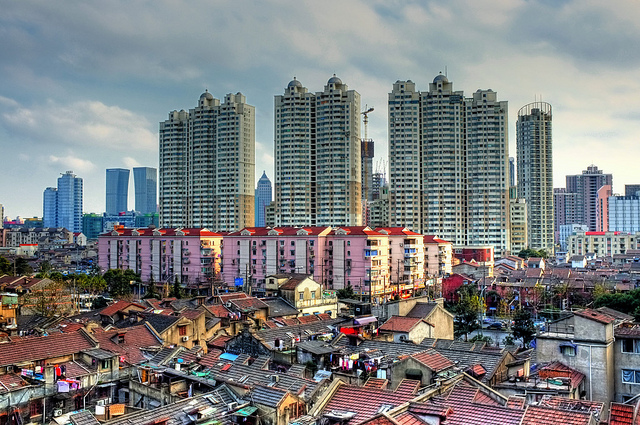
For the past 50 years in Asia, the economists have consistently beaten the strategists in the crystal ball stakes. Over those decades, you’d have done better going to an economist rather than a strategist to predict Asia’s future.
The economist versus strategist proposition upends the cliché that economists are the gloomy profession. Compared to the defenceniks, the econ-nerds are radiant optimists, putting their faith in the market’s invisible hand and in all of us as rational actors.
Strategists dream up the worst possible scenario, then spend billions to defend against it, based on a simple proposition: if only one low-probability, high-impact nightmares arrives, it’ll ruin your whole day—or decade, or country.
While strategists are happy to have their dark projections proved wrong, economists are never mistaken—they merely rejig the model, refine the theory and demand better statistics.
Over the past 50 years, the economists have got it right in calling Asia’s miracle, while the strategists have been confounded at how the dream keeps delivering.
In
The Strategist, these be fighting words. As this journalist is neither economist nor strategist (and, of course, some of my best friends are … etc.), I’ll go quickly to the standard hack defence: consider the facts.
When it comes to facts, my thoughts on Asia’s amazing run are shaped by an economist who has been a trusted guide for decades, Dr Peter McCawley. He has just published a history of 50 years of the Asian Development Bank (ADB),
Banking on the future of Asia and the Pacific (download
here).
When I sat down with Peter to get my signed copy, the conversation turned to one of his recurring optimistic themes: Asia’s economic rocket is still in the early boost stage, with many more golden decades to go. As McCawley commented: ‘It’s a dazzling story. We’re just at the start. Asia’s economic miracle can run for another 50 years.’
McCawley points to electricity consumption as just one measure of the distance Asia still has to go. In Australia, annual electricity consumption is around 10,000 kWh per person, and in the US it’s 13,000 kWh per person. In India, Indonesia and the Philippines, the figure is about 800 kWh per person.
Asia is still relatively underdeveloped, McCawley says, and there’s a lot of upside to come: ‘They’ve tasted prosperity, and they like it—cars, bigger houses, mobile phones, international travel. The Asian boom will bring lots of troubles, it’s true—more pollution, for example—but the boom will go on nevertheless. Asians are sick of being poor.’
In the book’s conclusion, McCawley cites
ADB thinking on what the Asian century could look like by 2050:
If growth in Asia follows recent trajectories, average per capita income could rise sixfold (in purchasing power parity terms) by 2050. In this scenario, the Asian share of global gross domestic product will rise rapidly, from around 28% in 2010 to over 50% in 2050. It is a reasonable assumption that, with half of the world population in Asia, the region will regain the dominant economic position it held before the Industrial Revolution.
The description of the golden future is followed by a quick nod to the strategists’ nightmare: ‘Asia’s rise is not preordained.’ Along with the usual econ-nerd prescriptions about macroeconomic management, infrastructure, health and education, plus open trade and investment regimes, there’s a
don’t-stuff-it-up injunction: ‘Hard-won gains in growth and poverty reduction can be quickly lost if there is instability or conflict.’
Asia is already into a huge investment boom. McCawley comments that Asia’s levels of capital accumulation are low; the capital-per-person figure is only 10% of that in the US. The emerging power in rounding up multilateral capital is China.
In 2015, China created two new institutions for financing infrastructure:
- the Asian Infrastructure Investment Bank (AIIB), headquartered in Beijing
- the New Development Bank, headquartered in Shanghai and created by Brazil, China, India, Russia and South Africa.
McCawley’s book points to a possible division of labour between China’s AIIB and the Asian Development Bank:
AIIB would focus on infrastructure investment and stay away from concessional operations, social sector, policy-based lending, and research work, and … AIIB would aim at being a leaner institution without a resident Board. Because of these different characteristics, there would be more scope to cooperate and complement each other.
McCawley told me that Asia’s ravenous appetite for capital means there’s no need for a fight between the AIIB and ADB: ‘I don’t think there’s a problem. People are saying there’s rivalry, but both of them are relatively small banks. Even the World Bank is a small bank in banking terms. There’s room for another 10 AIIBs or ADBs in Asia.’
The difficulty for China in building Asia’s future, he suggests, is more about culture than cash. Chinese bureaucrats in Asia, McCawley says, ‘often don’t do negotiation very well—they’re not used to dealing with landowners, for instance’. The Chinese government model of seizing any land wanted for development can’t be exported: ‘It’s a big cultural problem. They’re used to doing things in China and this will work nowhere else in Asia.’
A China confronted by culture clash, McCawley suggests, can take some quiet lessons from the 50-year experience of the ADB, especially some habits of mind that Japanese leadership has built into regional development.
McCawley says the ADB is an important example of Asian regionalism:
This bank is interesting because it’s one of the most successful Asian regional organisations. If we’re interested in regionalism, what are the elements of success in this? Why has it worked? I think one of the reasons it’s worked is it’s not Anglo-Saxon. It’s an Asian institution. They have learned to compromise. They know how to go slow. And the Japanese are good at compromise when they want to—they’ll live with India and China.
May the economists continue to call it right.
 Print This Post
Print This Post